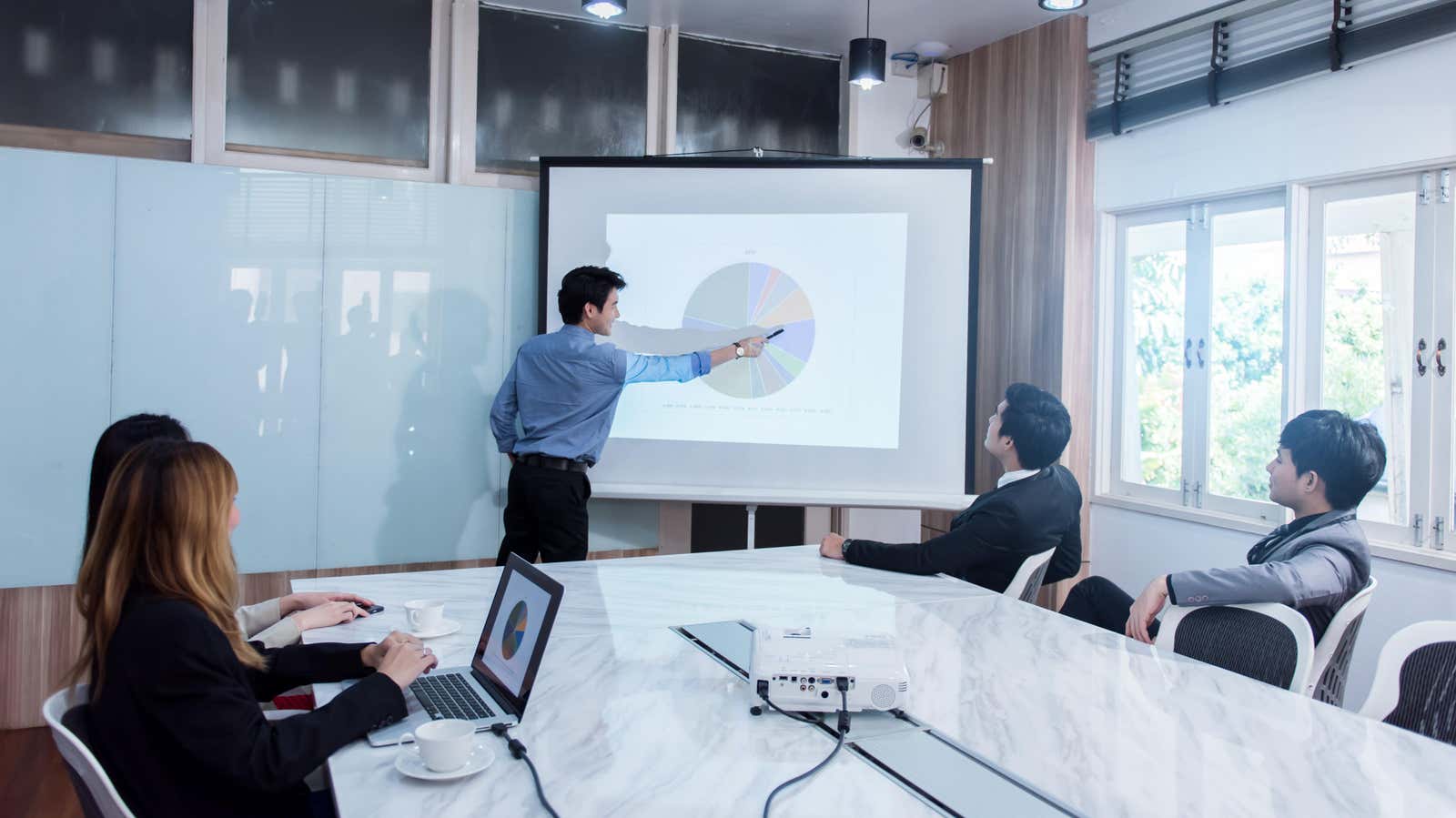How to Make a Presentation at the Last Minute

A digital slideshow presentation can be beautiful and informative if you know what you are doing and how to use your software to the best of your ability. It will also take you some time to put all the information together, decide how you want to present it, and create something visually impressive and useful. But what if you don’t have time? What if your boss tells you at 10 am that you have to speak at 11 am, or if you forgot about the project until the morning when it was due? You can still make a beautiful presentation, even in just an hour.
Your Slideshow Timeline
We’ll go over the details below, but for now, here’s the schedule you should follow if you only have an hour or so to create your slideshow:
- 10 minutes to identify key points and messages to share
- 10 minutes to search for stock drawings, graphs, photos or other items
- 35 minutes to create a simple presentation
- Five minutes to download the presentation and set up to show it
Stick to the basics and what you already know
When you google how to make a slideshow quickly, you get a lot of suggestions from websites that promise to help you make a great slideshow quickly. If you haven’t used one of these presentation builders yet, don’t start now. It takes time to learn the ins and outs of the new software, as well as how to play slideshows when you’re done with it. You run the risk of significantly slowing down your project progress if you choose a random online presentation generator and then spend most of your time figuring out how the hell to use it.
Also, you can finish your project with an online designer only to find out that you can’t download it unless you pay or sign up for a trial that will end up sucking money out of your checking account every month. , after you no longer need the software. Instead, use software you already know or have, such as Microsoft PowerPoint or Google Slides.
Use ready-made design templates
The main presentation programs have pre-installed design templates that you really should use. For example, in Google Slides, you will find “Theme Builder” under the “View” tab. You will be shown dozens of possible themes, each with its own layout for individual slides. Each slide template is unique but matches the color and font themes of others with the same theme. Your presentation will look coherent and thoughtful, even if it was an urgent job. It only takes a few seconds to access and helps you deliver a presentation that looks much more professional than a blank white slide or, worse, some eccentric WordArt nightmare.
Include only the most important information
You don’t need to have every word of your presentation on the slides. In fact, the fewer words you have, the better for you if what you show impresses and helps you remember what you want to convey verbally.
Before you start creating your slideshow, review your notes, research, statistics, or whatever you have to present. Highlight key results or points that your audience needs to see. Build around them. If you’re looking at quarterly sales, title one slide “Third Quarter Sales.” Include a bullet point or two that showcase the sale. Add a chart if you have one, but don’t bother creating one if you don’t have one. There is no need to add extra information about what it all means ; you will discuss it out loud during the presentation. The next slide can be an annual comparison with sales in the previous third quarter or a comparison with sales since the beginning of the year. Again, just stay simple.
To this end, the choice of font is very important. According to Pickit , a digital asset management company, you should “try to use no more than two different fonts in your presentation and make sure they blend well together and don’t clash or distract.” If you’re using a pre-made template, the font selection work has already been done for you.
Use a font size of at least 30 pt for headings and something between 24 and 28 pt for extra text, which really shouldn’t be much.
Organize your ideas
Each slide should contain one message, thought, or idea. For example, don’t split the historical overview on the same slide as the future projections. You can use many slides and it won’t take you long, but you will show that you were nervous and rushed if you presented something rambling and confusing.
Pickit also suggests using only three to five markers at a time and no more than five items per slide. We would recommend even fewer items if possible because you don’t have time to upload, drag or arrange. However, Pickit has a great tip related to this: “Make images bigger and reduce text.” If an image or diagram on hand can explain something as well as a set of markers, always use an image.
According to Pickit, “We know that our brains can process images 60,000 times faster than text, and using a large image gets your point across quickly without distraction.” Plus, it’s just faster on your side. ( PCMag also recommends that you don’t shy away from free stock images for this purpose, and only try to do so if you’re familiar with how to find quality photos and, if your presentation is going to be public, how to get them.)